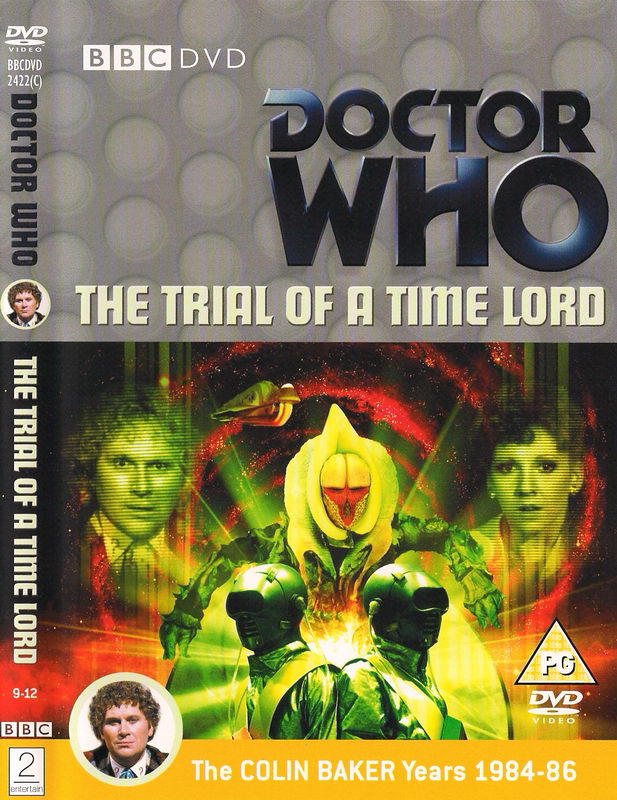
Aired 1 – 22 November 1986
After a look to Doctor Who past stylings with ‘The Mysterious Planet’ and a firm entrenchment in the present stylings with ‘Mindwarp,’ neither of which reached the needed heights of excellence needed for a show under increasing pressure and the latter of which condemned its lead under an air of ambiguity, The Trial of a Time Lord next looks to the future with ‘Terror of the Vervoids’ to suggest where the franchise may be headed next. Unfortunately, despite the unique premise of seeing events yet to occur and thus meeting new companion, Bonnie Langford’s Mel, after her introduction to the Doctor, ‘Terror of the Vervoids’ is the weakest of the season’s serials, half-heartedly throwing together many familiar plot points but failing to create any sort of excitement or momentum that proved the show had learned from past mistakes as it brazenly forged forward.
Recycling of plot elements of previous Doctor Who adventures and external sources is not inherently a death sentence by any means, but it does seem like an odd choice for a story supposedly offering a glimpse at how the franchise will change. Nonetheless, the biggest flaw is that the story simply doesn’t hold up as the murder mystery it strives to be because crucial information is withheld until practically the resolution itself. Even looking past the Vervoids’ costuming issues and the fact that the actors in them do little to evoke any sort of plantlike being to distinguish them from the humanoids aboard the ship, the lack of necessary information and exposition again rears its head with the Vervoid plotline as the means to save Earth is brought about with aspects only ever brought up at the very end of the adventure.
Of course, Doctor Who has flirted with the prospect of genocide before, most notably in ‘Genocide of the Daleks,’ and that prospect again manifests in ‘Terror of the Vervoids’ as the titular beings are revealed to be the last surviving members of their race. However, whereas other incarnations have wrestled with internal demons or at least offered other alternatives to assure the beings’ survival whenever thrust into that position, the Sixth Doctor seems strangely callous here due to the plantlike nature of the Vervoids that he seems to argue lessens their sentient rights. While the Vervoids’ arrival on Earth would, of course, be disastrous and the Doctor would never side with any race over humans, it’s jarring to see him take this stance even after admitting that the Vervoids are not inherently evil or psychopathic. Stranger still is that the audience is asked to root for the Doctor here because of the extreme villainy of the Valeyard, but this is a strange case for the Doctor to put forward as a defense regardless.
Even if the writers can’t successfully exploit the fact that the Matrix supposedly allows glimpses into the future and certainly don’t even try to explain why Gallifrey has so often been in trouble both in its past and futures with that ability present, it nonetheless is a fascinating conceit with far-reaching consequences. Of course, ‘Terror of the Vervoids’ is more notable for introducing Mel as the Doctor’s new companion. She is literally a blank slate with no backstory whatsoever, and she quickly proves that she has the ability to put the Doctor into his place, something that Peri never quite managed. Getting the boisterous Sixth Doctor to ride an exercise bike and drink carrot juice quickly shows that this relationship is very different even if Mel is often reduced to a stereotypical runner and screamer here, but it does at least suggest that the Doctor is capable of some degree of concession, change, and amiability. Truly, though, in a story so fraught with misfires and unrealized potential, that is hardly the most rewarding compliment to give to what should be and needs to be such a crucially important story.


Leave a Reply